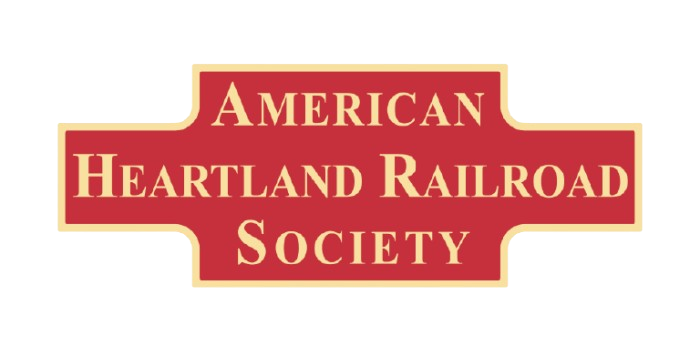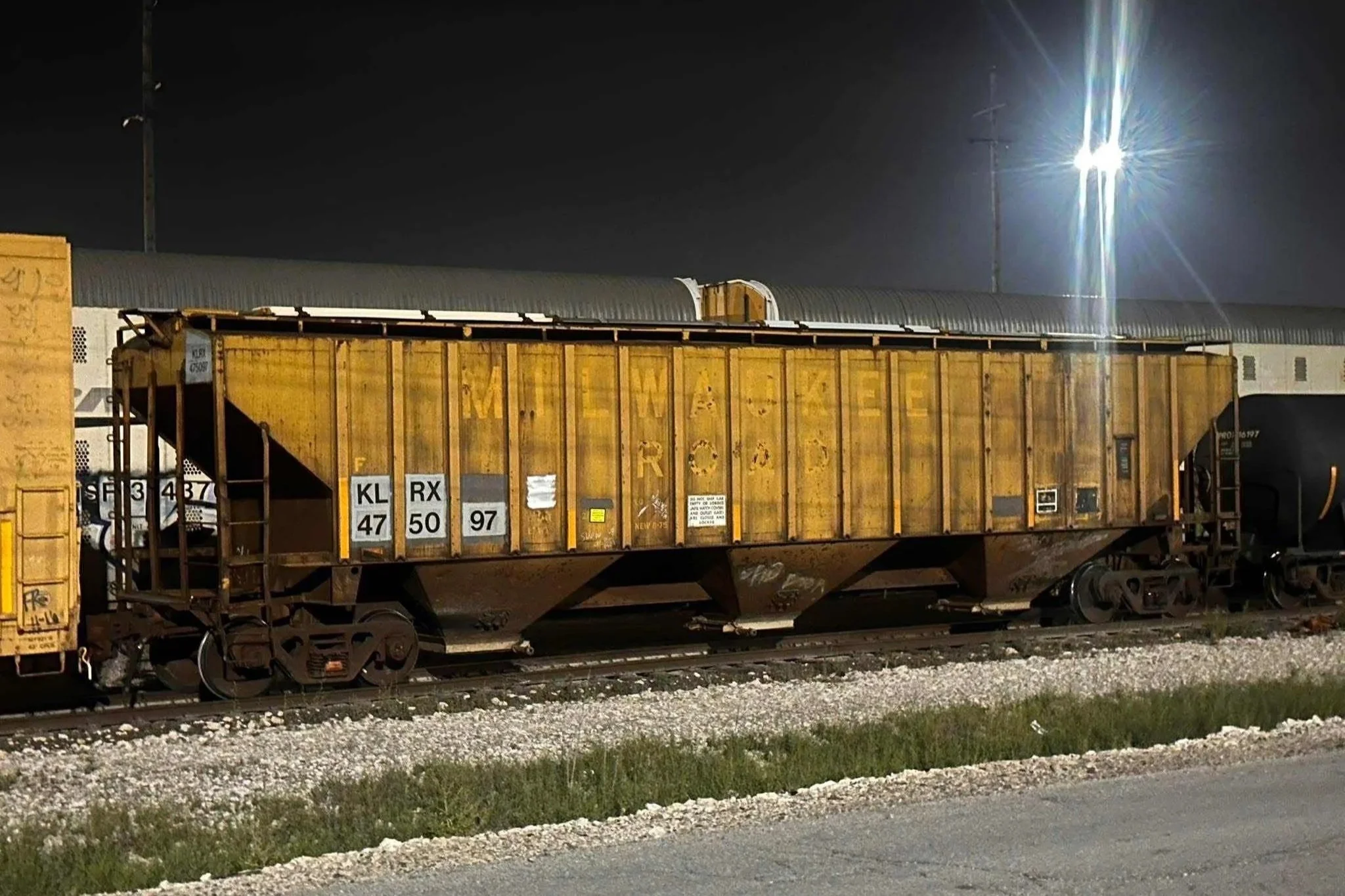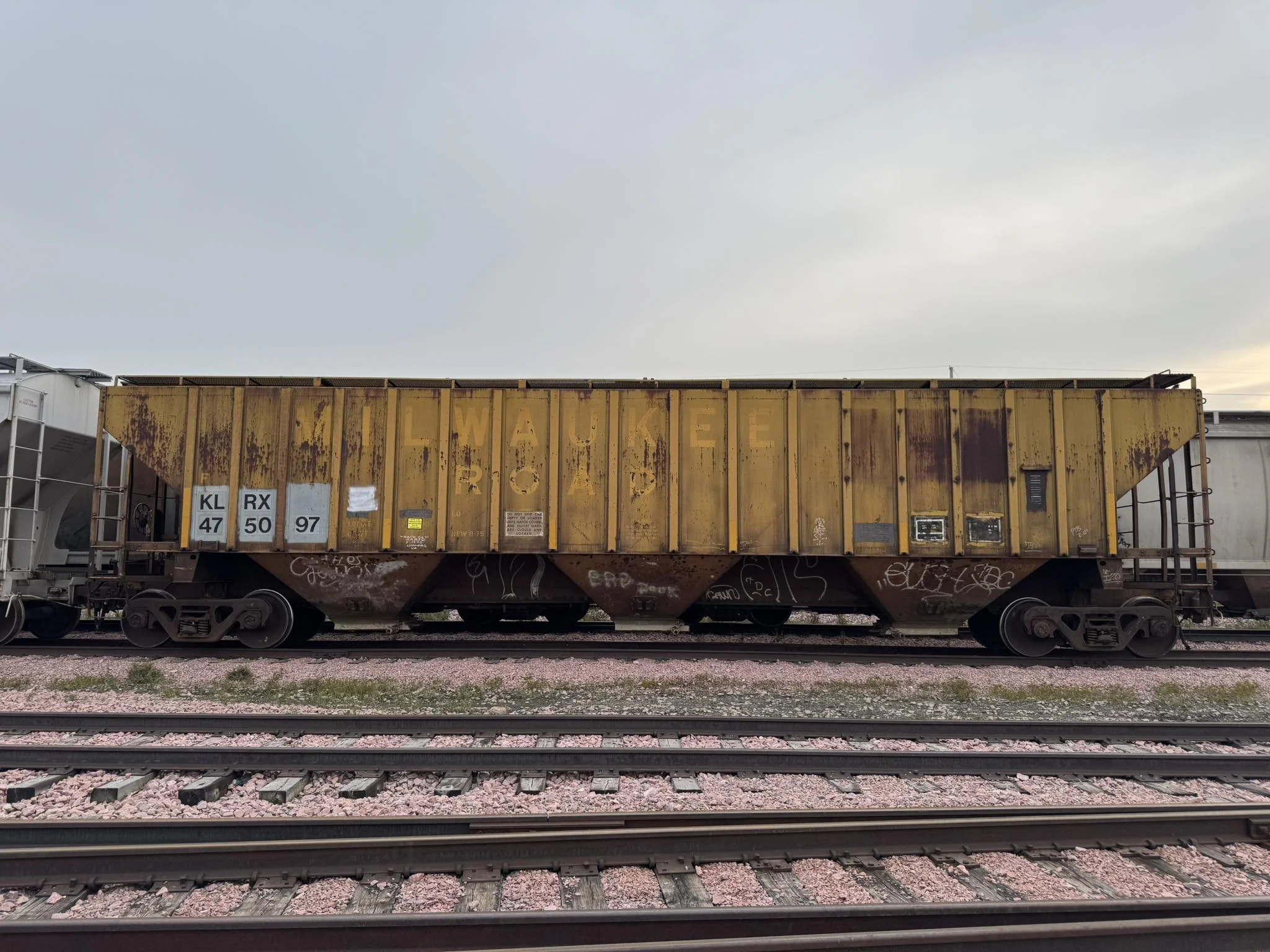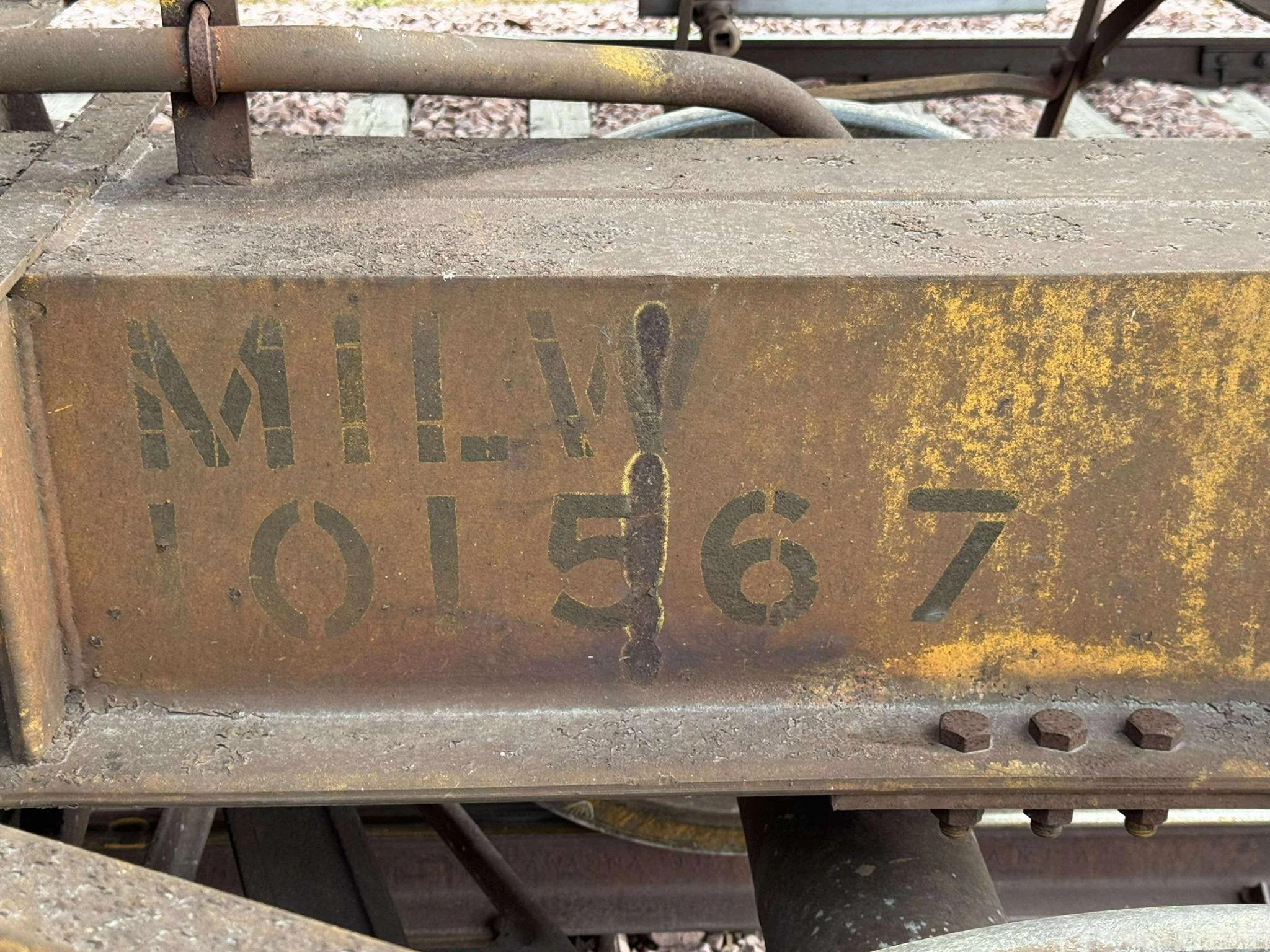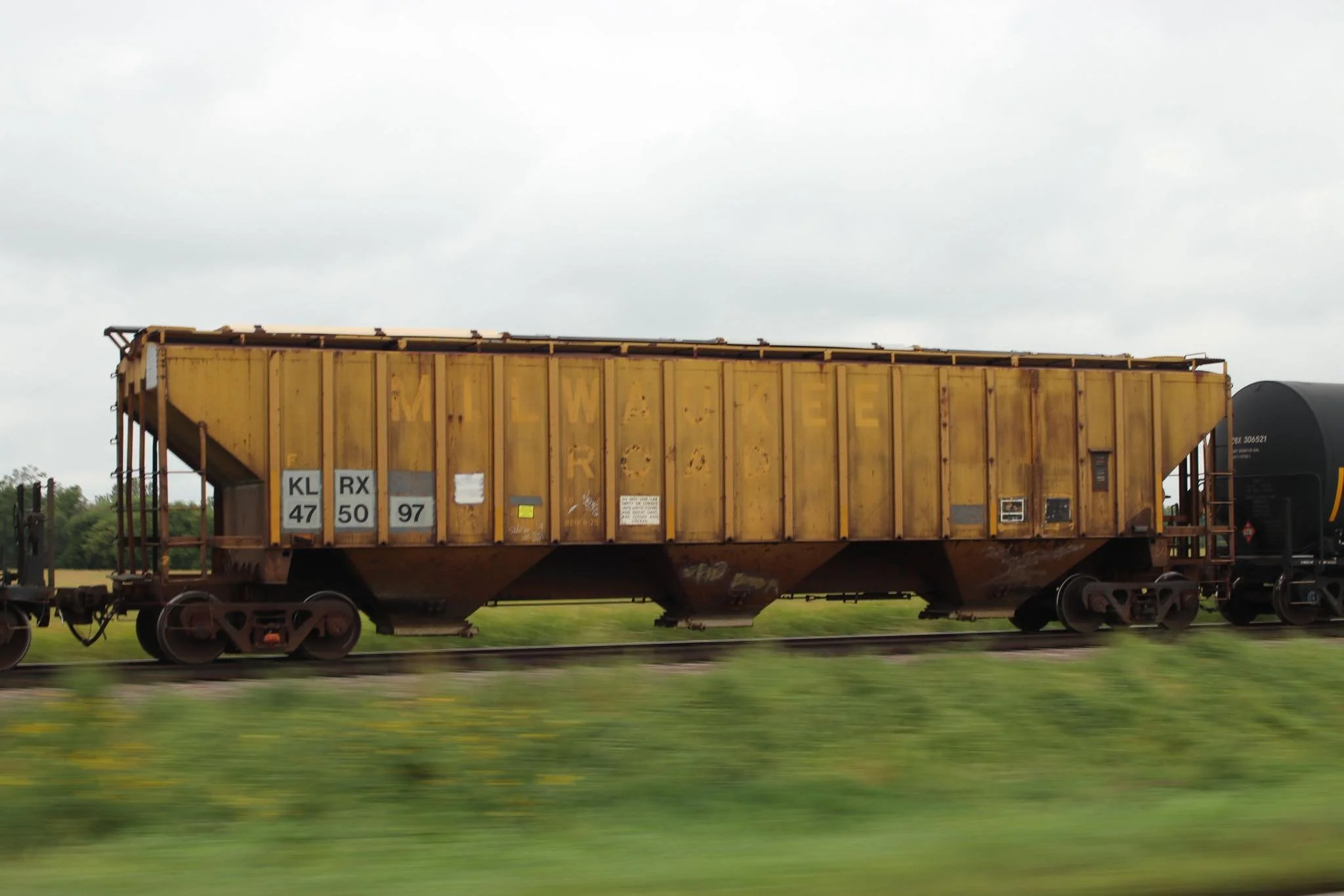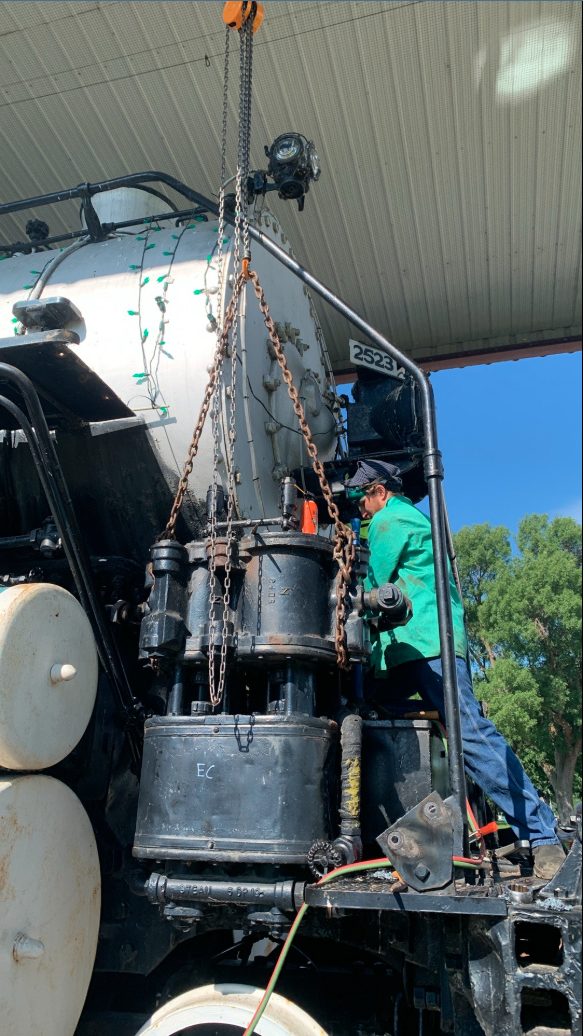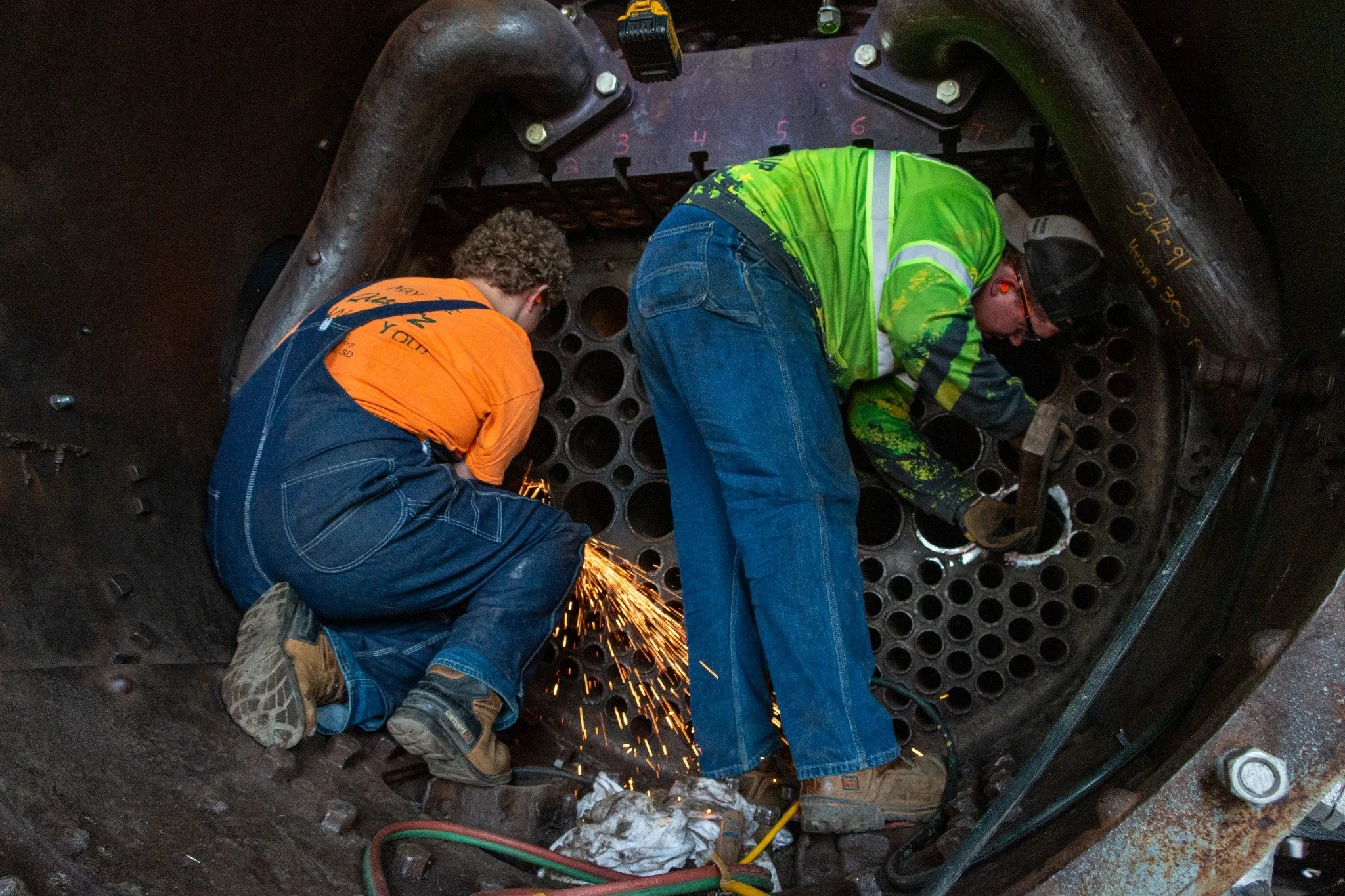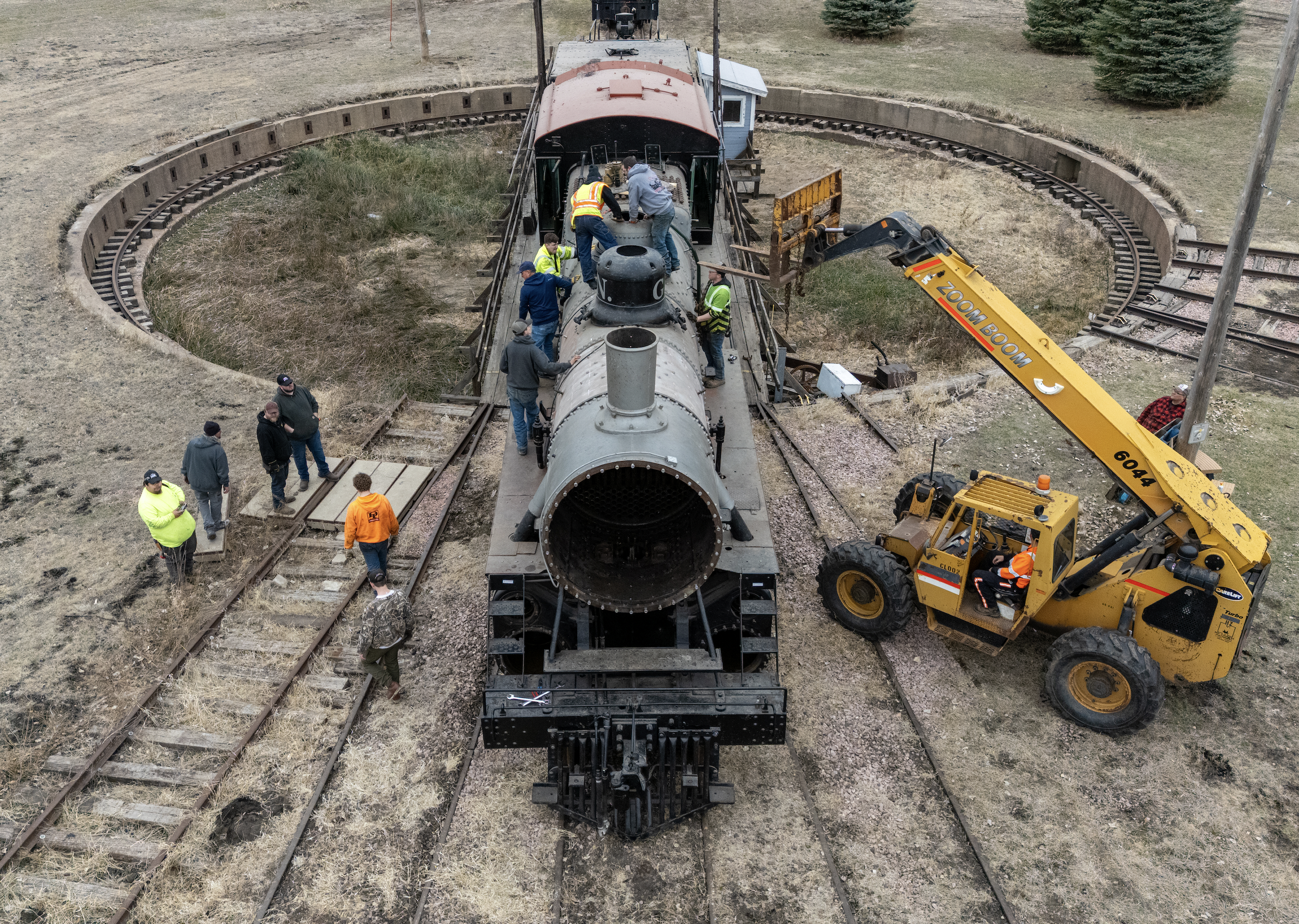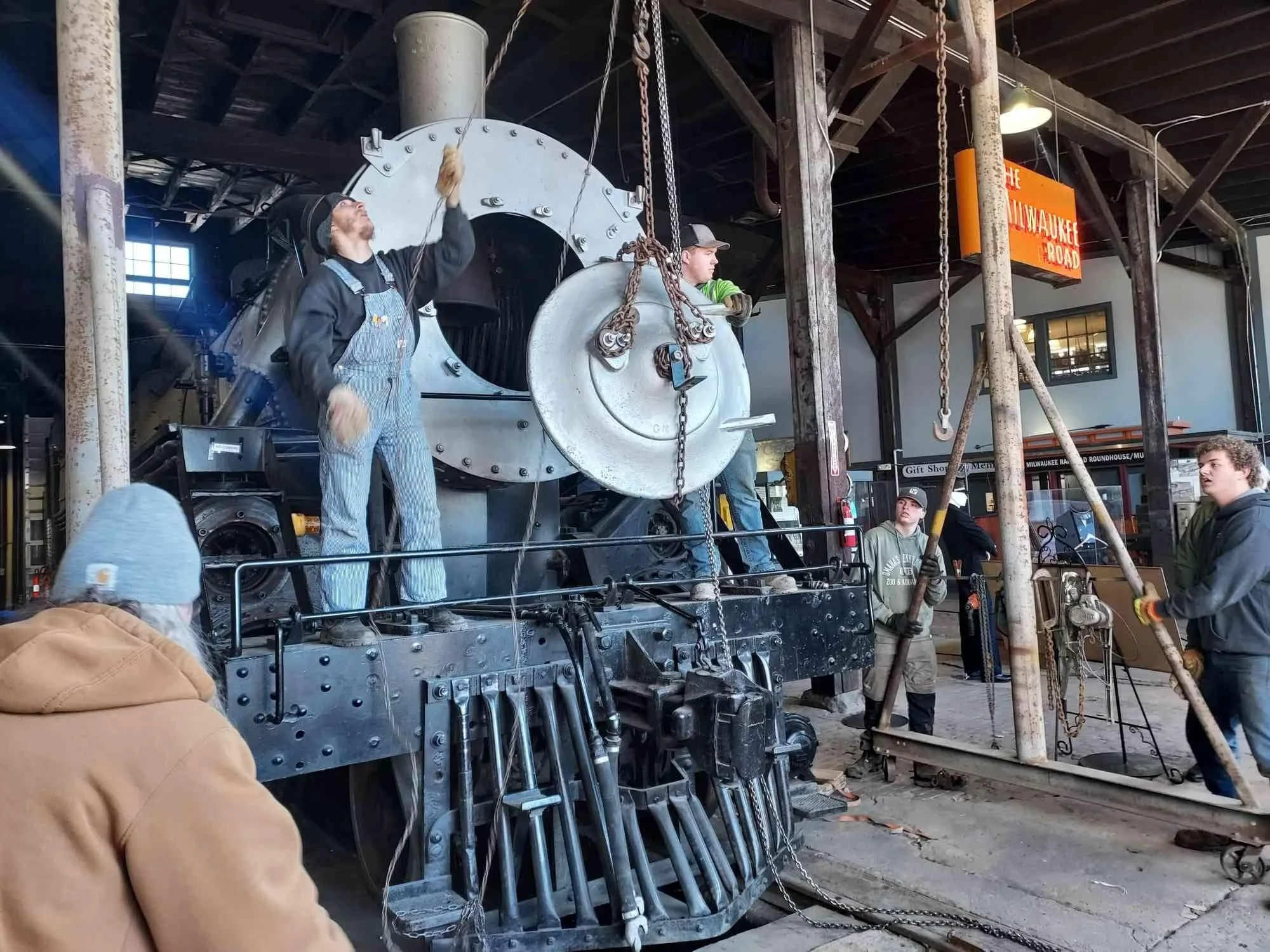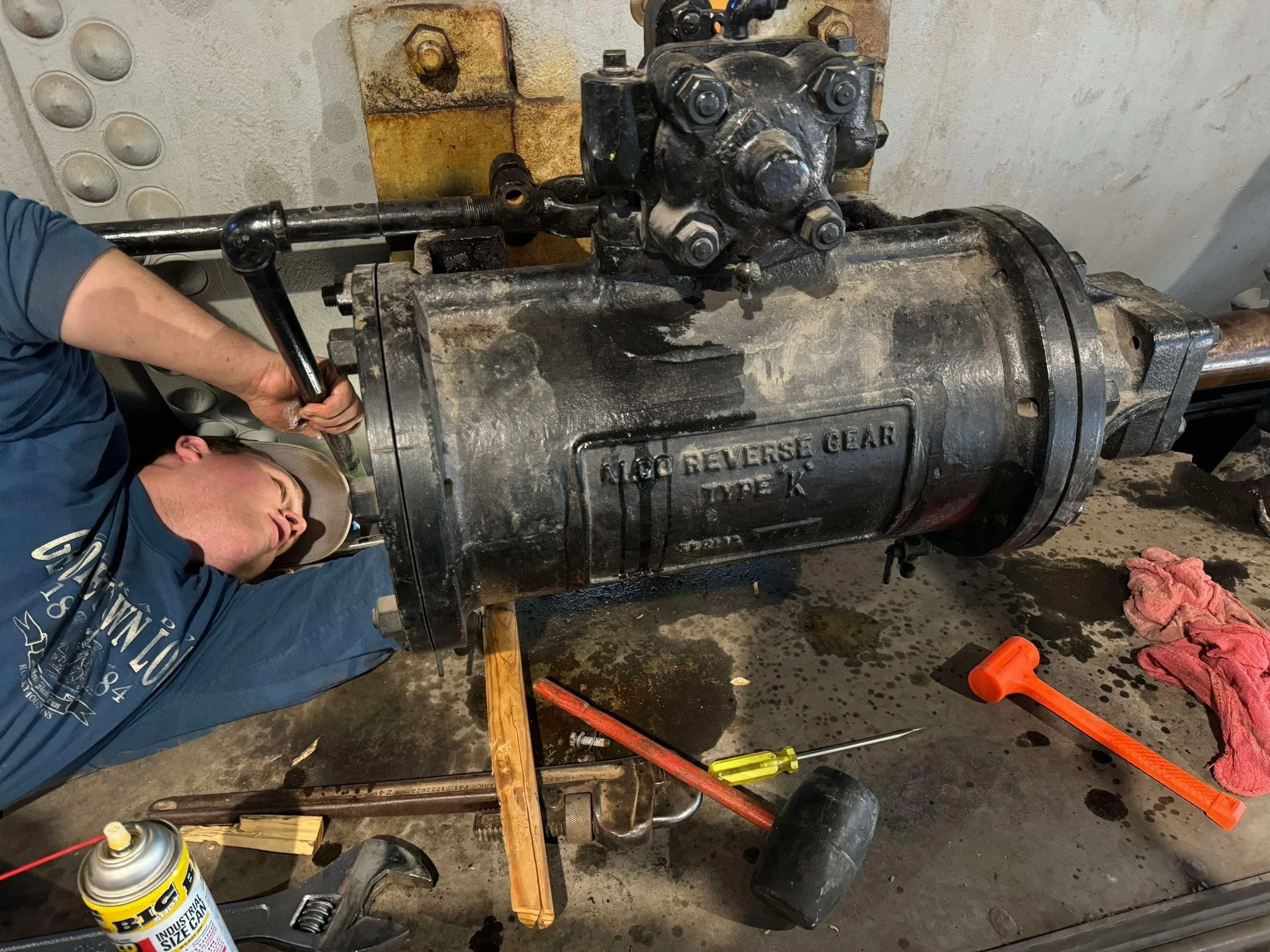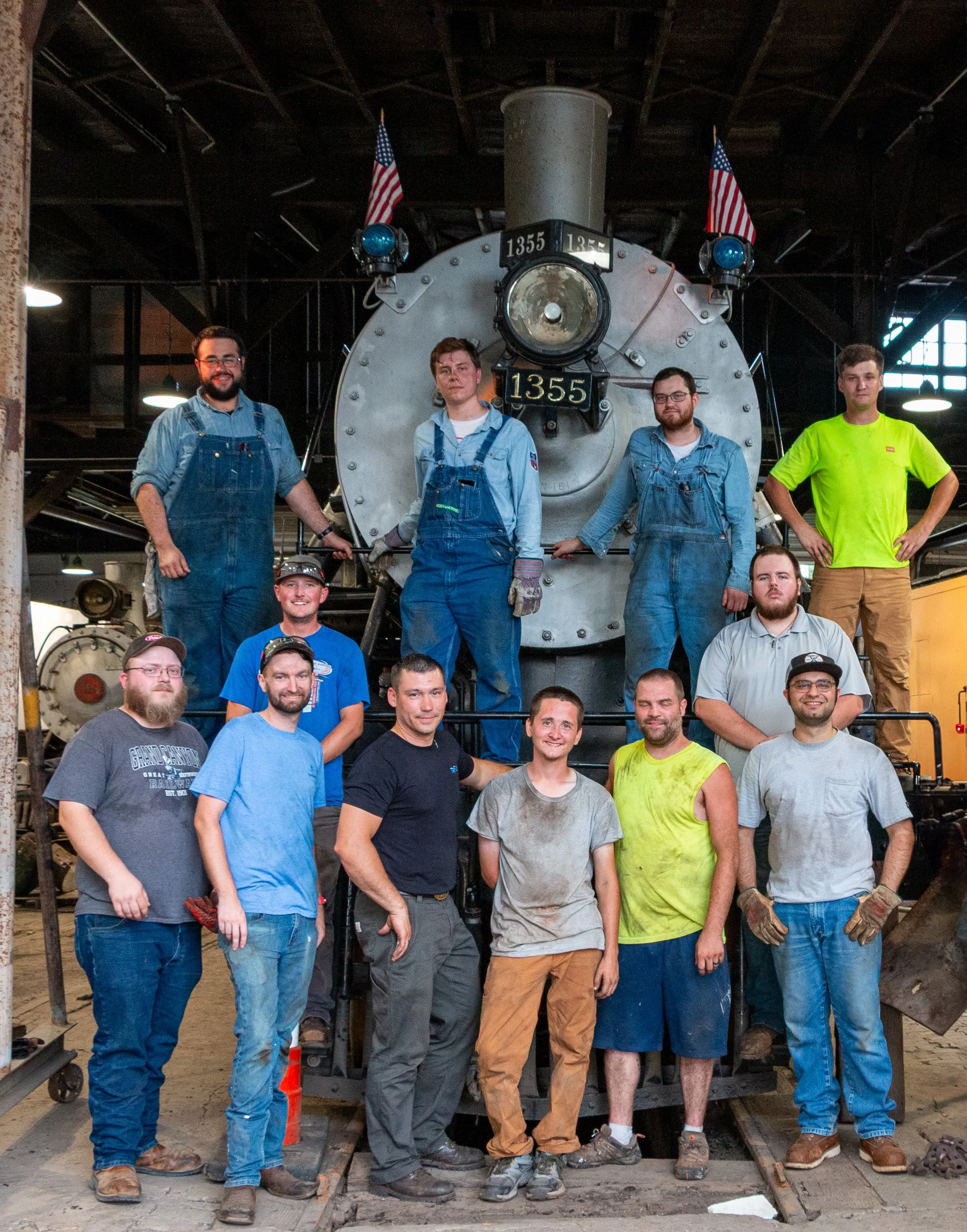AHRS BLOG
We are incredibly pleased to announce our very first equipment acquisition: KLRX 475097, originally Milwaukee Road 101567. This has been quite the journey. It’s very fitting the story of our first preservation project has been awesome, stressful and at times, downright frustrating.
Let’s start at the beginning. I was casually scrolling Facebook when I came across a post in the group “Ghosts of the Milwaukee Road”. It showed KLRX 475097 out riding the high iron. The post noted that the car was built in August of 1975, which meant it would be aging out of interchange service at the end of the month. This started the process of me digging into who owned the car. After a bit of research on reporting marks, I found out the owner was KBX Logistics. I contacted them via email to ask about a potential donation of the car, knowing full well it was a long shot. Incredibly, three days later, we received a response from KBX. They wrote to us that the car was delivered to the scrap location that very day. However, KBX told the scrapper to hold off and was trying to make it happen for us. What an incredible feeling it was to read that email. Then sets in the reality of the situation. What was jubilation turned into “holy crap, how are we gonna do this”. After talking to AHRS President Logan Stilwill about it, I began working with Kevin Flahive, KBX’s Director of Rail Transportation. We had it all hammered out in about four and a half hours. KBX would donate us the car and we were on to working with BNSF and the Dakota and Iowa Railroad to make it happen.
This leads us to the next step, which was moving the car to Sioux City, IA. Ultimately, we tried to get BNSF to assist but that fell through due to time constraints. Working with L. G. Everist’s Scott Vandentop and the Dakota and Iowa Railroad‘s Tim Smith, we were given the opportunity to store the car on the D&I. This was only possible due to the relationship we have with the great people at L. G. Everist and the D&I and we cannot thank them enough. We had billing for the car on August 22nd, giving us eight days to have the car make the journey from the scrapper in Kansas City, to Sioux City, IA. Alas, this is where the stress and frustration set in. The day we got billing squared away, BNSF took the switch accessing the scrap facility out to replace it. This pushed moving the car back several days. BNSF eventually did get the switch accessing the facility back in service and had the car in the Argentine yard waiting for an outbound train. Volunteers were watching the Kansas City rail cams like hawks trying to see if the car had made the outbound Sioux City bound train for multiple days. Eventually, BNSF sent it out of Argentine Yard on the night of August 30th. With the help of the D&I, we were able to track the car along its journey. We also were lucky to have the Smith family find the train along its journey and take some incredible photos and videos of the car along its trip. Many thanks to Jason and Ty Smith for their support and contributions. The car arrived safely in Sioux City, IA a day later and was interchanged to the Dakota and Iowa for storage until we can arrange movement to our restoration and display location.Attached to this blog, you’ll find photos of the car as it made it’s journey. Photos are by Parker Presley, Ty Smith, AHRS President Logan Stilwill and myself.
The list of people to thank is long.
KBX Logistics, specifically Kevin Flahive, Director of Rail Transportation for KBX. He and KBX went above and beyond to help us in saving this piece of history. Truly this collaborative effort would have never had the chance to get off the ground without their help and support. For that, we will always be extremely grateful.
Local BNSF management in Sioux City. They ensured a smooth movement of the car to the DAIR interchange once the car landed in Sioux City.
L. G. Everist and The Dakota and Iowa Railroad. The D&I, and their parent company L. G. Everist, have been incredibly helpful in moving the car to Sioux City and on top of that, were gracious enough to let us store the car on their property for the time being. Their partnership on this project has helped us overcome a major short term hurdle that we faced from the start.
Our Supporters. Everyone who has donated to help us save the car. We have had 27 individual donors who have raised over $3,500 at the time of this writing. Your support and faith in us means the world and we appreciate it so much.
The next steps for the car are moving it to its final display location and ultimately repainting the car into its “As Delivered” paint. This will include reproducing the metal signs on the side reading “America’s Resourceful Railroad”. This will be a costly and labor intensive process that will require developing new skill sets, but we are confident we will have a beautiful piece for the public to enjoy.
Ultimately, this was a great learning experience for us as an organization. I can definitely say I learned a lot. We have many exciting projects in the works and of course, our restoration of Great Northern 1355 with the Sioux City Railroad Museum. We look forward to future opportunities to work with great partners and save more of the rail history of the American Heartland.
Matt Hultman
Vice President
American Heartland Railroad Society
BLOG BY MATT HULTMAN – AUGUST 2025
Photo by Parker Presley
Photo by Ty Smith
G.N. 1355’s NYAB No. 5 Duplex compressor needed its piston rings and piston rods replaced, as they were damaged.
Fortunately, the Kandiyohi County Historical Society in Willmar, MN, has G.N. 2523, a P-2 class mountain type with two of the same air compressors. The historical society generously agreed to let us remove these compressors, tear them down for parts, and return cosmetically identical compressors to the locomotive.
You can learn more about G.N. 2523 and the organization here: http://www.kandiyohicountyhistory.com/engine.html.
Volunteers from the AHRS were sent up to Willmar to meet with the director of the historical society, where the agreement was made. Both compressors were carefully removed and transported to our shop in Sioux City, IA. While G.N. 2523 has been sitting outside since the 1960s, the addition of an overhead structure to protect the locomotive from the worst of nature's fury has kept this locomotive in amazing condition. In all, we were able to safely remove both compressors and the governor for use on our project.
JUNE & JULY 2025
The superheater tubes from G.N. 1355 have been removed and organized for testing.
The process of cutting out the tubes and flues from the boiler has officially begun. Thanks to our friends at the Boone & Scenic Valley Railroad & Museum for their help in guiding us through this process.
The air compressor has been fully disassembled, and parts needing repair/replacing have been identified.
The main reservoirs have lowered from the locomotive and are being prepped for their thickness testing.
The locomotive was turned in an effort to minimize the impact that the tube removal process has on the museum's day-to-day operation.
APRIL & MAY 2025
Volunteers kicked off the day with a hearty breakfast before getting straight to work. The first task was moving the Baldwin-built 2-6-2 Florida and Alabama No. 18 to clear space for G.N. 1355’s tender, allowing inspection work to begin.
Next on the docket was moving 1355 herself out of the shop for the morning. Once in position, volunteers carefully removed her sand dome and petticoat, both of which were safely placed into storage until next required.
The day's work concluded with the separation of the locomotive from its tender. Volunteers also began labeling the superheaters and carefully started the process of removing them.
MARCH 22, 2025
After 33 years of faithfully lighting the way, G.N. 1355’s headlight was carefully removed from the smokebox door and lowered to the floor. Immediately afterward, the smokebox door itself was detached. This delicate and essential task was carried out with care by volunteers Jacob Hildreth and Trevor Ruffcorn.
The next order of business was to loosen all the bolts securing the smokebox front plate to the locomotive. With enough volunteers on hand to safely manage the task, the team secured the plate to the A-frame crane. Under the careful supervision of President Logan Stilwill, the plate was gently lifted free and made its safe descent to the ground.
Now, it rests proudly on display beside G.N. 1355’s headlight, smokebox door, and bell, and now the general public now has a unique opportunity to view the inside of 1355.
MARCH 8, 2025
As the snow finally began to let up, the new year was ushered in with the first work weekend of the season. January’s and february’s workdays began with volunteers gathering to reacquaint themselves and welcome new faces.
With lighter tasks on the docket, volunteer Ian Vondrak and Sioux City Railroad Museum volunteer Cody Foreman set to work gridding G.N. 1355’s boiler for the ultrasound test with various degrees of success, as initial chalk guidelines proved to be misaligned. But after a good lunch and a bit of fenagling, the issue was sorted out, and work resumed with better results.
Meanwhile, Jacob Hildreth focused on disassembling the Alco Type K power reverser. At the same time, Chris Strawn and Joe Korpiewski turned their efforts to the tender, working to remove the water inlet line.
The locomotive’s dynamo was removed and underwent a preliminary test. To our pleasant surprise, the dynamo was in good condition, which had not been used since the mid 1950s.
JANUARY & FEBRUARY 2025
JULY 2024
Just weeks after record flooding brought over four feet of water into the Sioux City Railroad Museum, the planned joint restoration effort between the American Heartland Railroad Society and the Sioux City Railroad Museum was officially announced on July 3rd, 2024. Despite the flood damage, the project began with its first volunteer weekend shortly thereafter, drawing volunteers from across the Midwest.
Work began on Friday, July 12th, with crews prepping Great Northern No. 1355 for an initial hydrostatic boiler test. This meant carefully removing the remaining sections of the locomotive’s iconic green boiler jacketing.
Saturday, July 13th, brought early progress thanks to the arrival of several steam-experienced volunteers. Teams quickly organized to begin thorough inspections of the firebox, running gear, and tender. The boiler was slowly filled and gently heated in preparation for pressure testing.
As expected, the test uncovered several areas needing attention, including leaky staybolts, worn out and missing air lines, and air tanks that would require structural testing. Far from being discouraging, these discoveries were valuable in mapping out the restoration’s priorities and timelines.
The weekend wrapped up on Sunday, July 14th, with final tasks, a cleanup of the roundhouse.
